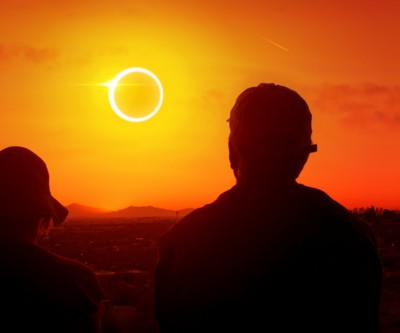Latest News
Latest Ads
-
Jasmine Jewel
Call
-
Omidan group
Call
-
Amir Madanpour
Call
-
Dimo studio
Call
-
Yorkacademy
Call
-
Maryambagheri
Call
-
Shishlix Restaurant
Call
Researchers record how life’s glow fades after death
Photographed by V. Salari, V. Session, L. Frankel, D. Englind, C. Simon, and D. Oblak, published in The Journal of Physical Chemistry Letters, a new study by Canadian scientists has captured an intriguing phenomenon: a faint, invisible glow emitted by living organisms that gradually fades away as they die.
The research may seem supernatural at first glance, but before you assume that human or animal bodies have a halo of light, the researchers emphasize that this is not mystical at all and is simply part of the body’s biology and natural processes.
“We have a metabolism in our bodies, and as a result, we produce light. It’s nothing more than the production of energy in our bodies,” says Daniel Oblak, an associate professor at the University of Calgary and one of the study’s authors.
This subtle glow, invisible to the naked eye, is called Ultraweak Photon Emission (UPE), and researchers say it could provide valuable clues about health, stress levels and even the definition of life.
Scientists already knew that living things like humans, animals and plants produce UPE, but this is the first study to capture detailed images of how this light fades after death.
The study, published in The Journal of Physical Chemistry Letters and supported by Canada’s National Quantum Sensors Program, compared UPE in living and dead mice.
What is UPE?
All living things produce very weak amounts of light, the researchers say. This light is the result of chemical reactions in cells, particularly during metabolism and oxidative stress. Oblok describes it as similar to how glow sticks work; Where two chemicals combine to release energy, some of which is reflected as light.
“This light is emitted by all living things—from humans to plants to cell cultures,” Vahid Salari, one of the study’s authors, explained in an interview. The intensity of this light is very low, he said, emitting only 10 to 1,000 photons per second per square centimeter.
By comparison, Oblok said, “A regular light bulb emits billions of billions of photons per second. While this light is so weak that it requires complete darkness and ultra-sensitive cameras to observe it.”
Recording the glow of life and the blackout after death
In this study, scientists used ultra-sensitive cameras to record the very weak light emitted by the bodies of live mice, dead mice, and damaged plant leaves.
In the live mice, the most light was emitted by the skin; While some organs, such as the liver, continued to glow slightly for a while after death, the proportion of photons reaching the skin surface from internal organs was less than 10 percent of the total light recorded.
Thirty minutes after death, the overall glow of the body had dropped sharply. Some bright spots remained, which the researchers said were not caused by body heat. “The first question everyone asks is, is this light the same as body heat?” said Oblak. The answer is no, because the mice were kept at a controlled temperature and were all at the same temperature when the image was recorded.
The heat light emitted by hot objects is in the infrared spectrum and is called blackbody radiation. But what was recorded in this study was in the near ultraviolet-visible-infrared spectrum and had a different nature.
Possible applications and future research
According to scientific expert Dan Reskin, these weak radiations are much more sensitive than body heat radiations. “It’s like a loud speaker playing a loud sound and you’re trying to hear a whisper in the same space,” he said.
The researchers say future studies could include examining UPE in cold-blooded species like snakes, fish, and reptiles to see if the pattern of glow and fade is different. Also, while UPE has been recorded in living humans in places like the hands, forehead, and chest, there have been no studies on dead humans.
Plants Glow Too—Especially During Stress
As part of their study, the research team subjected plant leaves to mechanical and chemical damage. Surprisingly, adding benzocaine (a common topical anesthetic) to the damaged leaves caused a dramatic increase in UPE, even more than when the leaves were exposed to hydrogen peroxide.
Researchers don't yet know the exact cause of the reaction, but they suspect it may be related to sodium channels or an increase in reactive oxygen species.
From medicine to agriculture
While some may consider the light a mysterious phenomenon, researchers emphasize its biological nature. "It's not some kind of energy or mystical force," Oblak said. "It's a result of biology and body chemistry."
Scientists believe that UPE could become a useful tool in medicine and agriculture in the future, from non-invasively diagnosing diseases such as skin cancer to assessing the health of organs before transplants and also monitoring the stress of plants in fields or forests.
"Having a tool that can tell if a plant is alive or starting to die with a clear signal is very valuable," said Reskin.
He predicted that drones would fly over fields in the future to monitor the health of plants by measuring these wavelengths.
However, the researchers stressed that the research is still in its early stages and requires further studies to translate into practical applications.
News source
Suggested Content
Latest Blog
Login first to rate.
Express your opinion
Login first to submit a comment.
No comments yet.


































